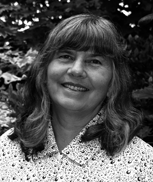We are all familiar with the tragic yet compelling image of the pietà, the bereaved mother cradling her crucified child—perhaps too familiar. We admire this classic image, but we fail to notice the many pietàs that we encounter along our way in today’s world, in those we meet as we journey.
Let me share with you three of them, whom I met on a recent trip through the Philippines.
Meet Teodora Alonso, mother of the Philippine national hero José Rizal. Teodora had 11 children, of whom José was the seventh. Teodora suffered from failing eyesight. As a result, her multitalented son (a medical doctor, writer, sculptor, painter and accomplished linguist) was inspired to specialize in ophthalmology in order to help her. It is one of the many surprising patterns of grace that this man, whose work was to help people see, was also to be the one who would open the eyes of his people to a greater vision of their destiny, freed from colonial oppression.
Teodora would live to see more than a mother should ever have to witness—the execution of her son, at the age of 35, by firing squad, after a mock trial for sedition. His main alleged crime had been to write books, especially the classic Noli Me Tangere, in which he exposed the corruption of both the Spanish occupation of his land and the ecclesiastical system that colluded with it.
At the Rizal Shrine in Fort Santiago in Intramuros, Manila, there is a line of footprints marking Rizal’s own via dolorosa to his execution on Dec. 30, 1896. Teodora was permitted one last farewell before watching her son walk to his death. He was buried in an unmarked grave. His sister, Narcisa, searched through all the burial grounds, with her unspoken cry of “Where have you laid him?” Eventually, she found a plot of freshly turned earth and placed a simple marker there in her brother’s memory. Now Manila is justly proud of a more worthy monument to a man who was martyred primarily for writing books, but whose courage and vision helped to bring about the Philippine Revolution.
The woman of my second pietà has no name. She was discovered by a rescue worker in the aftermath of Typhoon Sendong, which struck Cagayan de Oro in the Philippines in the middle of the night of Dec. 16-17, 2011, claiming nearly 2,000 lives. Most of the people were asleep in bed. The 17th would have been the second day of their novena, and they would have risen early for a dawn Mass, had they survived the night.
Some time afterward a rescue worker was returning from the scene of the disaster, when she saw a little family approaching, carrying a birthday cake with two candles. When she advised them that there was nothing and no one left where the typhoon had struck, the grieving mother said simply, “We just need to go back to where my baby daughter was swept away, so that we can celebrate what would have been her second birthday and give thanks for her short life among us.” Those birthday candles will remain, for me, as potent a symbol of love and loss as any more sophisticated monument could be.
My third Filipino pietà mother has many names. She does not grieve for a dead child, but for the loss of a child in quite another way. She is an overseas worker, one of hundreds of thousands like her, who take employment in faraway foreign countries as the only way of supporting their families. They are forced to leave their own children behind for long periods of time, in order to make a living by caring for the children of strangers or tending the sick in distant lands. You may know some of them in your own hometown, your own street.
When they return for brief holidays to their homes and families, it can happen that their own young children have almost forgotten them and no longer feel bonded to them. Their loss is perhaps the most grievous of all. One of the saddest expressions I have ever heard is sometimes applied to these migrant mothers. They are called “A.T.M. moms,” because they are perceived by their own little ones as merely the suppliers of money.
I cannot begin to imagine the anguish of any of these women. Perhaps only the Pietà of Calvary can do that. My prayer this Holy Week is that Mary and her Son will gather these sorrowing mothers, and all who grieve for lost sons and daughters, into their eternal arms.









Approaching Holy Week, may we consider in thought & prayer all those suffering in body or spirit, through sickness, want, or worry, including those who mourn. We all bear witness to each others' pietas in the body of Christ. Thank you, Ms. Silf, for bearing witness to these three.
Your article had me in tears- tears I couldn't shed when you were visiting my community in Canda and the news came that one of our Sisters had just died in hospital. as always- I am in shock first and it takes a long time before the tears will come. But your articles on Mothers hit me somehow in the right spot- so many women all over the world grieve the lose of their children. I shall grieving Mothers to my dily prayers. Thank you Margaret. Anitra ssjd